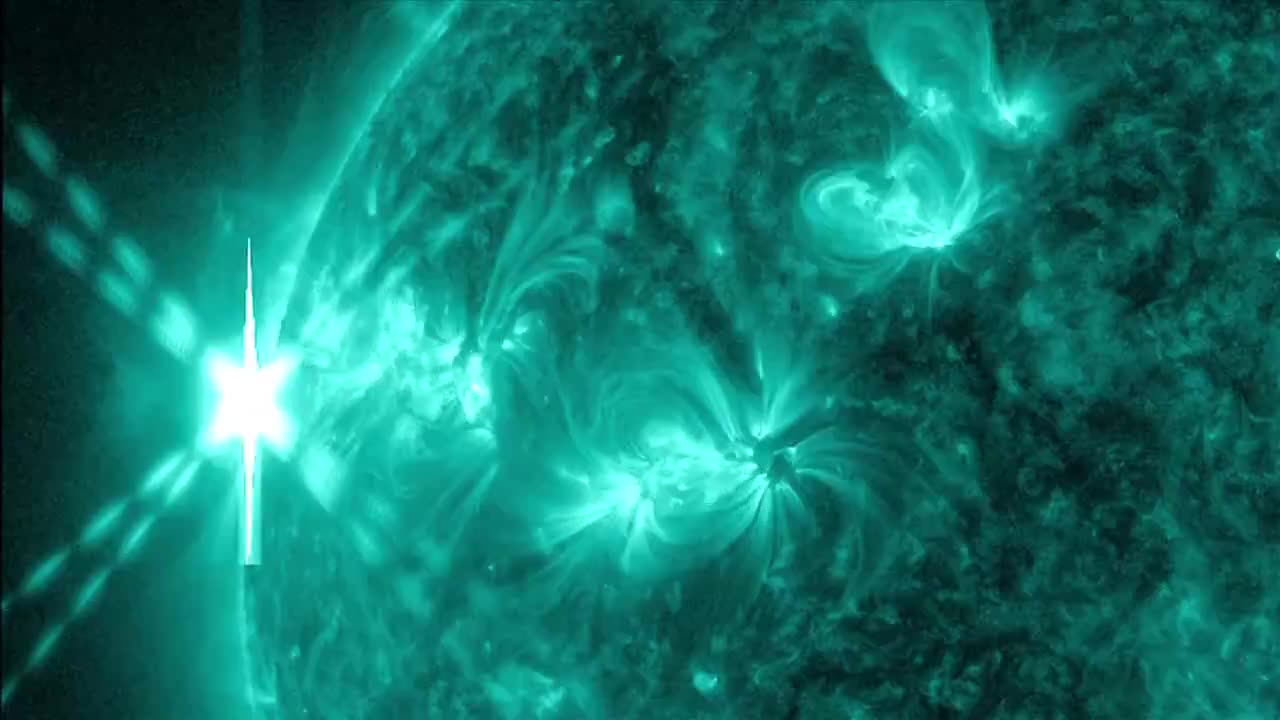Premium Only Content

NASA | Swift Catches Mega Flares from a Mini Star
On April 23, NASA's Swift satellite detected the strongest, hottest, and longest-lasting sequence of stellar flares ever seen from a nearby red dwarf star. The initial blast from this record-setting series of explosions was as much as 10,000 times more powerful than the largest solar flare ever recorded. At its peak, the flare reached temperatures of 360 million degrees Fahrenheit (200 million Celsius), more than 12 times hotter than the center of the sun. The "superflare" came from one of the stars in a close binary system known as DG Canum Venaticorum, or DG CVn for short, located about 60 light-years away. Both stars are dim red dwarfs with masses and sizes about one-third of our sun's. They orbit each other at about three times Earth's average distance from the sun, which is too close for Swift to determine which star erupted. At 5:07 p.m. EDT on April 23, the rising tide of X-rays from DG CVn's superflare triggered Swift's Burst Alert Telescope (BAT). Swift turned to observe the source in greater detail with other instruments and, at the same time, notified astronomers around the globe that a powerful outburst was in progress. For about three minutes after the BAT trigger, the superflare's X-ray brightness was greater than the combined luminosity of both stars at all wavelengths under normal conditions. The largest solar explosions are classified as extraordinary, or X class, solar flares based on their X-ray emission. The biggest flare ever seen from the sun occurred in November 2003 and is rated as X 45. But if the flare on DG CVn were viewed from a planet the same distance as Earth is from the sun and measured the same way, it would have been ranked 10,000 times greater, at about X 100,000. How can a star just a third the size of the sun produce such a giant eruption? The key factor is its rapid spin, a crucial ingredient for amplifying magnetic fields. The flaring star in DG CVn rotates in under a day, about 30 or more times faster than our sun. The sun also rotated much faster in its youth and may well have produced superflares of its own, but, fortunately for us, it no longer appears capable of doing so. Read more at: http://www.nasa.gov/content/goddard/nasas-swift-mission-observes-mega-fl... This video is public domain and can be downloaded at: http://svs.gsfc.nasa.gov/vis/a010000/a011500/a011531/ Like our videos? Subscribe to NASA's Goddard Shorts HD podcast: http://svs.gsfc.nasa.gov/vis/iTunes/f0004_index.html Or find NASA Goddard Space Flight Center on Facebook: http://www.facebook.com/NASA.GSFC Or find us on Twitter: http://twitter.com/NASAGoddard
-
 20:39
20:39
Producer Michael
20 hours agoEXCLUSIVE PAWN STARS SHOP TOUR WITH RICK HARRISON
82.4K3 -
 14:47
14:47
World2Briggs
17 hours ago $2.50 earnedShocking but True: The 10 States Leading in Murder
25.2K16 -
 8:30
8:30
Faith Frontline
15 hours agoPriest Reveals TERRIFYING Emily Rose Exorcism Details Nobody Talks About
23.2K11 -
 10:54
10:54
NAG Daily
15 hours agoMike on a Bike #5 - Charlie
21.6K11 -
 11:07
11:07
Ken LaCorte: Elephants in Rooms
16 hours ago $0.97 earnedWhy Do Black Athletes Dominate?
20.6K22 -
 2:01:45
2:01:45
BEK TV
1 day agoTrent Loos in the Morning - 9/24/2025
20.8K1 -
 LIVE
LIVE
The Bubba Army
23 hours agoCrying Kimmel Returns | Bubba the Love Sponge® Show | 9/24/2025
1,332 watching -
 46:08
46:08
ZeeeMedia
18 hours agoAutism: Vaccines vs. Tylenol, Parents Suing Open AI Speak Out | Daily Pulse Ep 113
34.4K35 -
 22:54
22:54
DeVory Darkins
1 day ago $16.80 earnedABC suffers fatal mistake brings Kimmel back on air as Trump makes shocking announcement
47K167 -
 19:04
19:04
putther
2 days ago $1.20 earnedTrolling a Level 7981 With My CHERNOBOG on GTA Online!
38.9K6